Loch Ness and the Glencoe Mountains
Do you believe? Part II of my Scotland blog. In America we have among other unexplained legends, Big Foot, Moth Man, and Sasquatch. The Irish have Leprechauns and Faeries, and Scotland has the Loch Ness Monster. These creatures appear and disappear throughout time, with reports of sightings popping up in news reports. I recently got to travel to Scotland and took a boat ride down Loch Ness. It was a cold and windy day, but the sky was clear and a brilliant blue. The sun had little warmth, but it bathed the water with light, turning it from steely gray to raven black. (The color of the water is so dark because of the high peat content.) A perfect day for a sighting! Alas, Nessie did not make an appearance! (Except in the gift shop.)
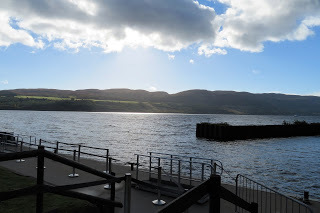
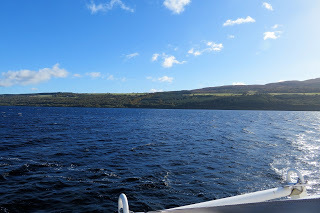
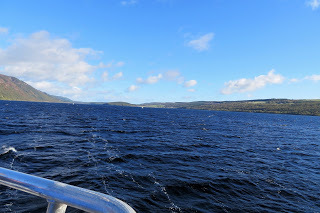
A 'loch' in Scotland means lake and Loch Ness is the second largest loch, second to Loch Lomond, but it is the largest by volume with its deepest point of 126 fathoms or 755 ft. It runs for 23 miles, stretching from Fort William in the west of the Scottish Highlands, to Inverness in the north. It is 2 1/2 miles wide.Loch Ness is freshwater and filled with fish, but none are visible because the water is so dark. And by the way, don't think of swimming in Loch Ness. The water temperature stays around 40 degrees, year round.
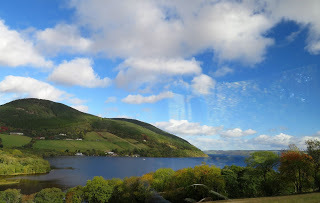 Our tour group was cautioned NOT to joke with the Scots about Nessie because many DO believe the Loch Ness Monster is real and most have stories about "a friend of a friend of a friend" who once spotted the beast. Descriptions vary, but most are of a dark dinosaur-like creature with a long neck. Feeling brave, I asked our bus driver if he believed in Nessie. He sat silent for a moment before saying, "No, I don't believe there is a monster." Only to follow that with, "But there is something in there that eats all of the fish."
Our tour group was cautioned NOT to joke with the Scots about Nessie because many DO believe the Loch Ness Monster is real and most have stories about "a friend of a friend of a friend" who once spotted the beast. Descriptions vary, but most are of a dark dinosaur-like creature with a long neck. Feeling brave, I asked our bus driver if he believed in Nessie. He sat silent for a moment before saying, "No, I don't believe there is a monster." Only to follow that with, "But there is something in there that eats all of the fish."
Along the coast of Loch Ness is Urquhart Castle, one of the largest in area in Scotland. The present ruins date from the 13th to the 16th centuries, but they are built on the site of an early medieval fortification. In the 14th century, the castle was in the midst of many wars for Scottish independence. It even had a draw-bridge!
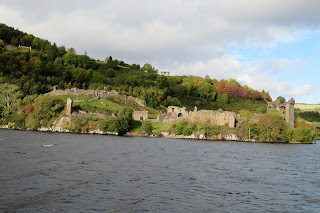
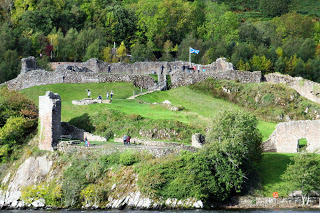
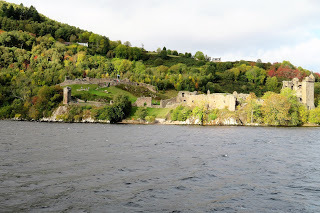
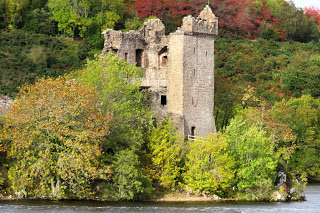 After giving up our search for Nessie, we drove down the glen to the mountains. Like Loch Ness, this ares is near Inverness and in the Lochaber area of the Scottish Highlands, lying at the north-west end of the glen, part of County Argyll. (Ever buy any argyll socks?)
After giving up our search for Nessie, we drove down the glen to the mountains. Like Loch Ness, this ares is near Inverness and in the Lochaber area of the Scottish Highlands, lying at the north-west end of the glen, part of County Argyll. (Ever buy any argyll socks?)
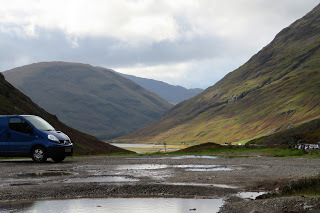
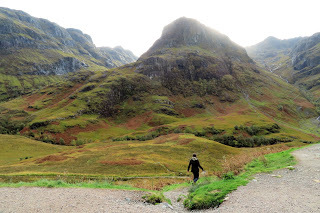 My words can't describe their raw-bone beauty.
My words can't describe their raw-bone beauty.
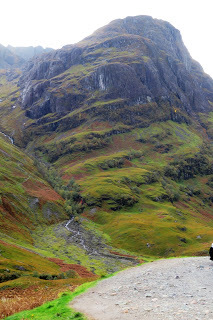
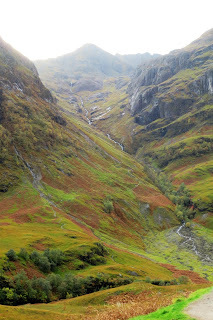 Nor can I describe their majestic height. They appeared to reach into the sky, disappearing into heaven.
Nor can I describe their majestic height. They appeared to reach into the sky, disappearing into heaven.
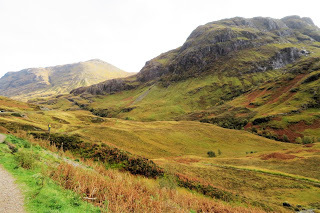
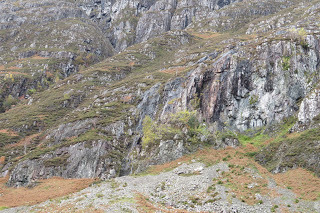
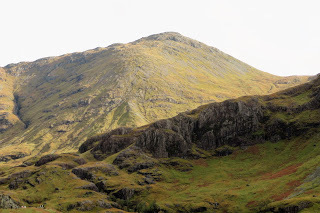 I left these mountains thinking, "No wonder the Scots emigrated to our mountains in central Appalachia. If they could live in these mountains, our mountains must have felt like home."
I left these mountains thinking, "No wonder the Scots emigrated to our mountains in central Appalachia. If they could live in these mountains, our mountains must have felt like home."
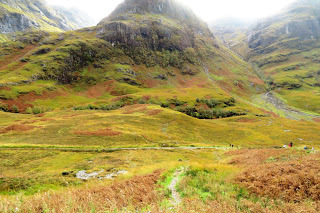



A 'loch' in Scotland means lake and Loch Ness is the second largest loch, second to Loch Lomond, but it is the largest by volume with its deepest point of 126 fathoms or 755 ft. It runs for 23 miles, stretching from Fort William in the west of the Scottish Highlands, to Inverness in the north. It is 2 1/2 miles wide.Loch Ness is freshwater and filled with fish, but none are visible because the water is so dark. And by the way, don't think of swimming in Loch Ness. The water temperature stays around 40 degrees, year round.
 Our tour group was cautioned NOT to joke with the Scots about Nessie because many DO believe the Loch Ness Monster is real and most have stories about "a friend of a friend of a friend" who once spotted the beast. Descriptions vary, but most are of a dark dinosaur-like creature with a long neck. Feeling brave, I asked our bus driver if he believed in Nessie. He sat silent for a moment before saying, "No, I don't believe there is a monster." Only to follow that with, "But there is something in there that eats all of the fish."
Our tour group was cautioned NOT to joke with the Scots about Nessie because many DO believe the Loch Ness Monster is real and most have stories about "a friend of a friend of a friend" who once spotted the beast. Descriptions vary, but most are of a dark dinosaur-like creature with a long neck. Feeling brave, I asked our bus driver if he believed in Nessie. He sat silent for a moment before saying, "No, I don't believe there is a monster." Only to follow that with, "But there is something in there that eats all of the fish."Along the coast of Loch Ness is Urquhart Castle, one of the largest in area in Scotland. The present ruins date from the 13th to the 16th centuries, but they are built on the site of an early medieval fortification. In the 14th century, the castle was in the midst of many wars for Scottish independence. It even had a draw-bridge!



 After giving up our search for Nessie, we drove down the glen to the mountains. Like Loch Ness, this ares is near Inverness and in the Lochaber area of the Scottish Highlands, lying at the north-west end of the glen, part of County Argyll. (Ever buy any argyll socks?)
After giving up our search for Nessie, we drove down the glen to the mountains. Like Loch Ness, this ares is near Inverness and in the Lochaber area of the Scottish Highlands, lying at the north-west end of the glen, part of County Argyll. (Ever buy any argyll socks?) 
 My words can't describe their raw-bone beauty.
My words can't describe their raw-bone beauty.

 Nor can I describe their majestic height. They appeared to reach into the sky, disappearing into heaven.
Nor can I describe their majestic height. They appeared to reach into the sky, disappearing into heaven.


 I left these mountains thinking, "No wonder the Scots emigrated to our mountains in central Appalachia. If they could live in these mountains, our mountains must have felt like home."
I left these mountains thinking, "No wonder the Scots emigrated to our mountains in central Appalachia. If they could live in these mountains, our mountains must have felt like home."

Published on October 17, 2018 12:01
No comments have been added yet.



